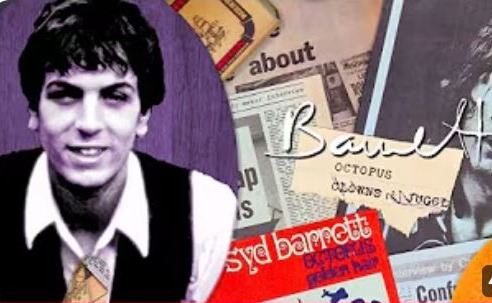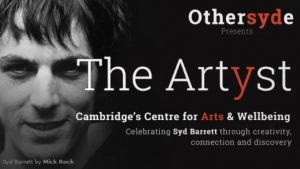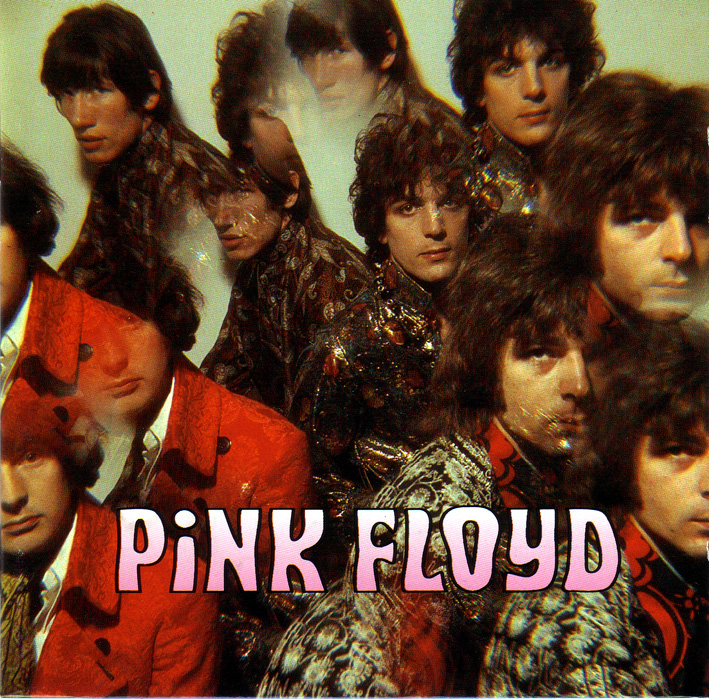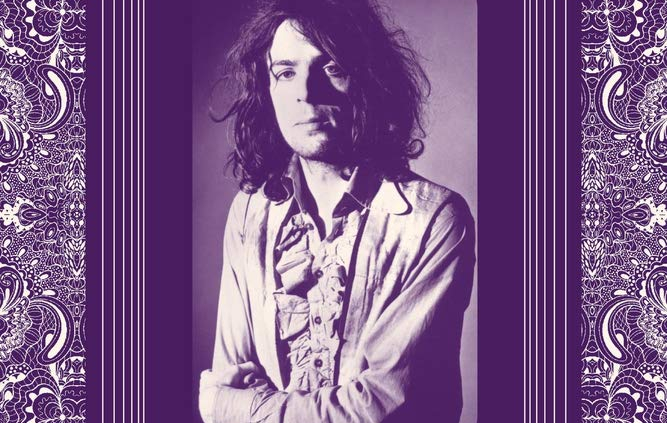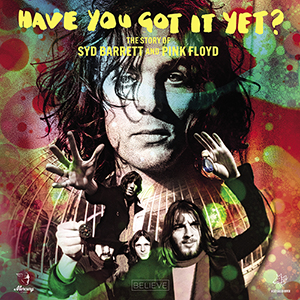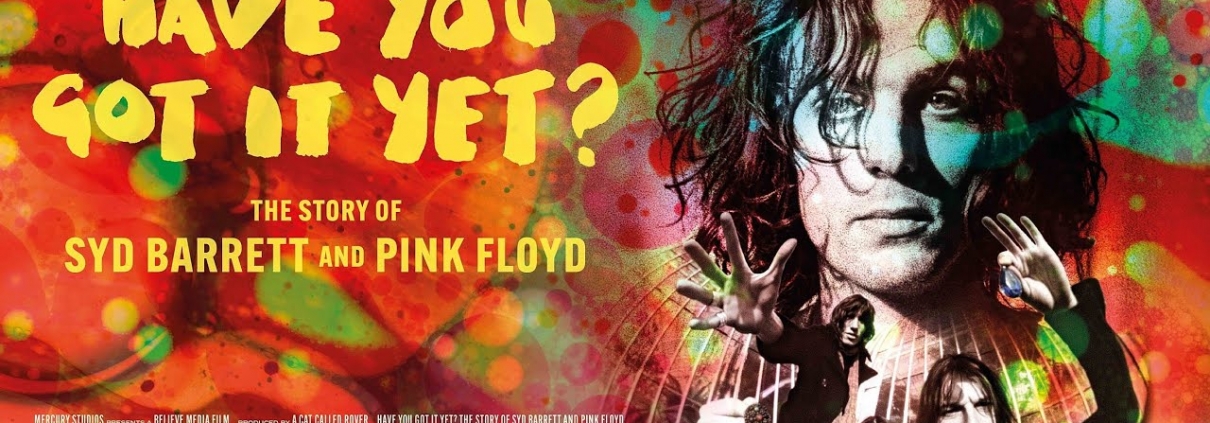Following the Paper Trail of Pink Floyd’s First LP
by Ed Paule
Behind Syd Barrett’s modern-day online presence are his niece and nephews. Collectively, they are responsible for the content of the “Official” Syd Barrett website, Facebook page, YouTube channel, Twitter and Instagram accounts. With a half-million followers on Facebook, it is quite a responsibility.
In order to minimize the number of errors and to help answer questions received from fans, Ian Barrett will periodically reach out to “Syd experts” for assistance. Early on 4 August 2023, the 56th anniversary of the release of Piper at the Gates of Dawn (hereinafter sometimes referred to as Piper), Ian sent the following message to me (and others):
“Can someone please clarify the release date of Piper? It seems to vary from 4th to 5th August all over the place. Wikipedia even states it is both 4th AND 5th August.”
I responded that 4 August was the correct “official” release date. Ian then enquired as to why there were all these references to the 5th out there. To this I said, “Someone makes a mistake and then others copy it. Vernon Fitch has the 5th on his Pink Floyd Archives website. He needs to fix that. But it could be the source that others copy from.” That’s not to say Vernon was the original source, he had found that date from some other source that he felt was reliable.
So later that same day, the official Syd Barrett Facebook page made the following post:
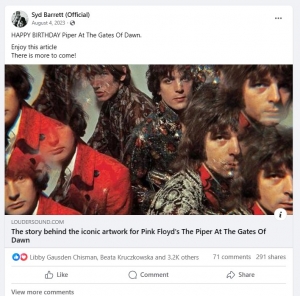
Then the following day, 5 August 2023, the following appeared on Pink Floyd’s “Official” Instagram account:

Ian was then contacted by Pink Floyd’s management regarding the discrepancy. Ian then asked me check whether the 4th was in fact correct. The following pages are the result of my journey to do just that.
We need to look at the hard evidence — the primary documentation from 1967 — to find the answer. For Piper, it’s not a simple task. Simple would have been if EMI had sent promotional copies of the album to their mailing list of radio stations and newspapers. But no such promo records exist for Piper.
For example, take a look at the promo records that were sent out for “Arnold Layne” and “See Emily Play:”


The official UK release date is printed right there on the centre punch out. “Brit. (10.3.67)” for “Arnold Layne” and “Brit. (16.6.67)” for “See Emily Play” are an abbreviation for “Britain 10 March 1967” and “Britain 16 June 1967” respectively.
Usually, demonstration records like these were distributed a week or two prior to the release date. This allowed the BBC, land-based radio stations and the ship-based pirate radio stations, to play them for their listeners ahead of the release and thereby build excitement and demand for it. It also gave newspaper editors an opportunity to listen to it and publish their reviews prior to its release — another marketing ploy to boost sales. The date printed on the record allowed the DJs and authors to inform their listeners and readers of when the record would be released. However, this didn’t happen for the release of Piper at the Gates of Dawn.
After delay from an originally anticipated mid-June release, the suits at EMI decided that the extra hype that a normal release schedule provided wasn’t needed. Piper would be “rush released” and skip the promo-record routine.
The evidence of this delay and transition from normal release to rush release is documented. Chronologically, the press reported on Pink Floyd’s first LP as follows:

Record Mirror — 8 April 1967
Published on 6 April, an article in the 8 April edition of Record Mirror article tells us that EMI hasn’t yet scheduled a date for Piper’s release.
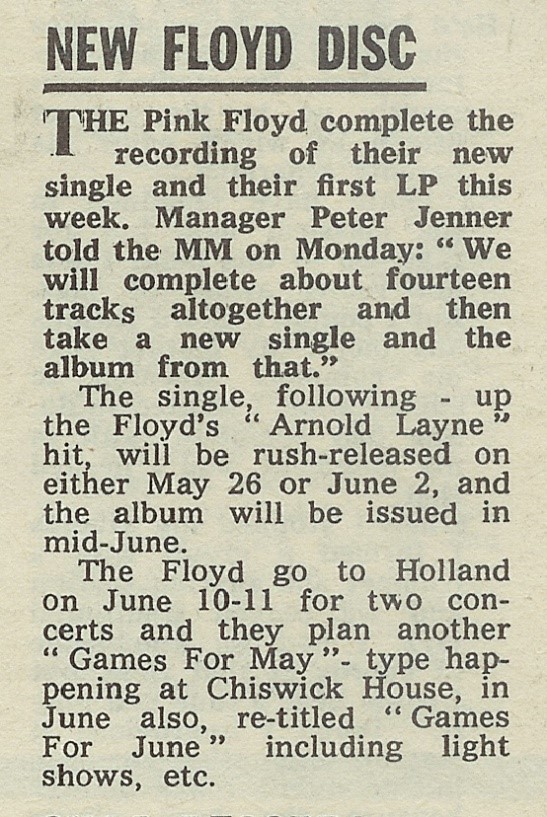
Melody Maker — 20 May 1967
Published on 18 May, the 20 May edition of Melody Maker says that Piper will be released in “mid-June.” This is the first time any time frame is given for the album’s release. EMI seems to have been very optimistic about the band’s progress on the record.

Melody Maker — 1 July 1967
Published on 29 June, the 1 July edition of Melody Maker informs us that the band has completed their work on Piper. In reality, EMI recording sheets show that the band was still making a few tweaks and wouldn’t be finished recording until 5 July. With their mid-June schedule blown out of the water, EMI announces that they will rush-release the record as soon as possible.
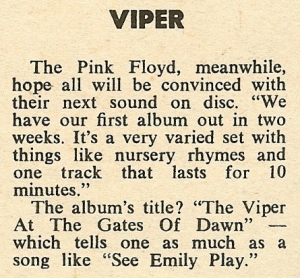
Disc and Music Echo — 8 July 1967
Published on 6 July, the 8 July edition of Disc and Music Echo article gives us an update on the misquoted “Viper [sic] at the Gates of Dawn.” A quote from Syd Barrett indicates that it will be released in two weeks (approximately 21 July).

New Musical Express — 8 July 1967
Published on 7 July, the 8 July edition of New Musical Express adds another week to Syd’s estimate by saying it should be released at the end of the month. Yet they seem to have mistaken the title of the opening track on the album as being the title of the album.

Disc and Music Echo — 15 July 1967

Melody Maker — 15 July 1967
Published on 13 July, the 15 July editions of both Disc and Music Echo and Melody Maker provide a new date, 11 August, for the rush release of Piper.
Meanwhile, between 13 July and 20 July, EMI documents show they performed the banding and cutting of the LP. Full-scale production could now begin.

Disc and Music Echo — 22 July 1967
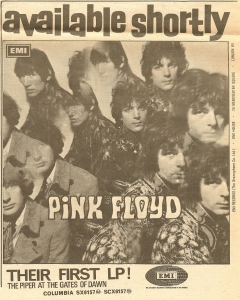
Disc and Music Echo — 22 July 1967
Published on 20 July, the front page of the 22 July edition of Disc and Music Echo indicates that Piper is to be released on 28 July. Elsewhere in this issue is an ad for Piper that says it’s “available shortly.” After pessimistically sliding the schedule to 11 August, EMI, again optimistic with the banding and cutting nearly complete, moved the schedule up two weeks earlier.
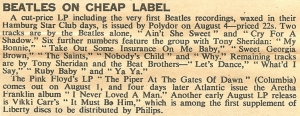
New Musical Express — 22 July 1967
Published on 21 July, the 22 July edition of New Musical Express appears to tell us that the date is now 1 August for the release. However, this appears to be a typographical error. They intended to say 11 August. In other words, NME was simply a week behind in reporting what DaME and MM had already reported in their 15 July issues.

EMI Leaflet
Printed sometime around 20 July is a leaflet that EMI distributed to record retailers. The leaflet encourages the retailers to hurry up and order their stock of Piper LPs in time for the newly projected 28 July release date.

New Musical Express — 29 July 1967
Published on 28 July, the 29 July edition of New Musical Express makes the final adjustment. Piper will be released next week.

Melody Maker — 5 August 1967
Published on 3 August, the 5 August edition of Melody Maker carries an ad stating that Piper is “available now.” This is another quirk, for if the album was truly available on 3 August, then both the 4th and the 5th of August are incorrect. However, this same ad would be published the next day, 4 August, in the 5 August edition of New Musical Express. I suspect that the ad creators were being frugal and decided not to split hairs and sent the same ad to both publishers.

Disc and Music Echo — 12 August 1967

New Musical Express — 12 August 1967
Published on 10 August and 11 August respectively, the 12 August editions of Disc and Music Echo and New Musical Express show Piper entering the charts after tabulating their first week of sales figures.
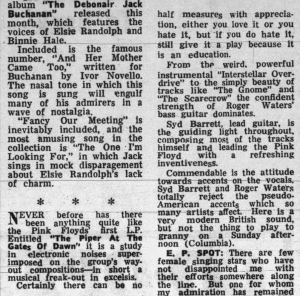
Leicester Mercury — 11 August 1967
The 11 August edition of Leicester Mercury was the first to publish a review of the album. As no promo records had been sent out early, the major music papers wouldn’t publish their reviews until the end of the month.
Thus far, I’ve shown how the scheduled release of Piper at the Gates of Dawn bounced around from mid-June to the second week of August, then back to the last week of July and finally settled on the first week of August. The actual specific date remains elusive. Yet, we do have one last clue that comes from the dates on the demo records, the articles and the leaflet.
What do 10 March (Arnold Layne’s release date), 16 June (See Emily Play’s release date), 11 August (the first time a specific date was given for Piper’s release) and 28 July (the first revision to Piper’s release date) have in common? They are all Fridays. That was the industry standard at the time. All the record companies did their releases on Fridays. It was simple microeconomics. Anyone that didn’t follow the pack was at a competitive disadvantage.
As another example, the 22 July edition of New Musical Express shown above talks about the 4 August release on Polydor of early Beatles’ recordings. Here are a couple more examples:

Record Mirror — 1 July 1967
The 1 July edition of Record Mirror lists various artists from various labels being released on 7 July — a Friday.

Disc and Music Echo — 5 August 1967
Published on Thursday 3 August, the 5 August edition of Disc and Music Echo includes Penny Valentine’s review of the new singles. A similar feature exists for the new albums. Had there been promo records sent to them ahead of time, Penny would likely have reviewed Piper in this issue. Take a quick look at the last line on each of her comments. Every “out tomorrow” refers to a Friday 4 August released date. The “out next Friday” refers to a Friday 11 August release date.
So, it is with an extremely high level of confidence that I claim 4 August 1967 as the “official” release date for the album in the UK.
Meanwhile, I talked with Vernon Fitch about the 5 August date he had on his website. He recalled that the date came from a press report on a release party held on the 5th. I haven’t come across any such press clipping; but even so, that party need not have been held on the exact day of the release, but a convenient day shortly afterwards. Vernon has since corrected the release date on his Pink Floyd Archives website to show the 4th instead.
It turns out that Pink Floyd themselves were already aware that 4 August was the correct date. From Ian, I learned that the band had informed their management who then informed their third-party firm running their Instagram account about the mistake with instructions to correct it.
The above essay is taken from the upcoming book Pink Floyd – 1967 by Ed Paule. The book delves deep into the events of this pivotal year in Pink Floyd history. It is scheduled to be released around October 2024.
Ed Paule currently resides in New Jersey, USA with his wife and children (except for one that has moved to South Carolina). Ed is a life-long Pink Floyd fan, collector and researcher. He collects paperware (newspapers, magazines, programmes, etc) from the 1965 to 1972 time period that has Pink Floyd content. He has a special affinity for the year 1967 which has led to the creation of a book on Pink Floyd that delves deep into that fascinating year of the band’s history.

